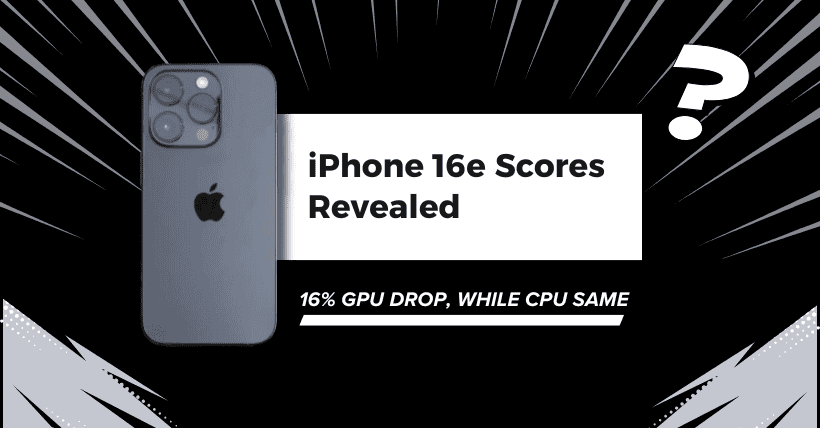Previously, many people said that the iPhone SE4 would use the 4nm A16 chip, not the A18. The key point was that this 4nm chip was manufactured at TSMC’s U.S. factory, which was highly significant.
Unexpectedly, Apple went off-script. The SE4 was renamed the iPhone 16e, and it didn’t use the A16 chip at all, but rather a brand-new A18 chip.
This A18 is slightly different from the one used in the iPhone 16 and can be considered a “stripped-down version.”
The CPU is the same, both are 6-core; the NPU is the same, both have 16 cores. But the GPU is different—the stripped-down A18 only has a 4-core GPU, while the standard A18 has 5 cores.
So the question is, how do the benchmark scores of the stripped-down A18 in the iPhone 16e compare to the A18 in the iPhone 16?
First, let’s look at the CPU. The A18 is a 6-core CPU, with 2 performance cores at 4.05 GHz and 4 efficiency cores at 2.42 GHz, which is the same as the AI in the iPhone 16e.
The benchmark scores are quite similar. From the Geekbench 6 CPU test, we can see the single-core score is around 3140, while the multi-core score is around 78,040. The two CPUs are not far apart, as they have the same CPU and 8GB of RAM, so the similar scores are expected.
Now, let’s look at the GPU. Using the Geekbench 6 Metal test, the stripped-down A18 (iPhone 16e) scores 24,188, while the standard A18 in the iPhone 16 scores 28,002, about 15.8% higher.
Theoretically, with one extra GPU, 5 cores compared to 4, the performance should be 25% higher, but the score is only about 16% higher. This is because benchmark scores are also influenced by the system, CPU, RAM, and other factors, so GPU count alone isn’t the sole determinant.
Thus, although the iPhone 16e is positioned as a mid-range phone, its SoC performance is still quite impressive, and it can compete with flagship Android phones.
Additionally, it uses the C1 self-developed baseband chip, which is expected to work well with the A18, as both are Apple’s own components. However, the current price of 4499 RMB is indeed a bit high, but if it comes with a 500 RMB national subsidy and some further discounts, bringing the price down to around 3500 RMB, it could truly become the strongest competitor in the 3500 RMB Android phone range, with no equals.

Disclaimer:
- This channel does not make any representations or warranties regarding the availability, accuracy, timeliness, effectiveness, or completeness of any information posted. It hereby disclaims any liability or consequences arising from the use of the information.
- This channel is non-commercial and non-profit. The re-posted content does not signify endorsement of its views or responsibility for its authenticity. It does not intend to constitute any other guidance. This channel is not liable for any inaccuracies or errors in the re-posted or published information, directly or indirectly.
- Some data, materials, text, images, etc., used in this channel are sourced from the internet, and all reposts are duly credited to their sources. If you discover any work that infringes on your intellectual property rights or personal legal interests, please contact us, and we will promptly modify or remove it.



